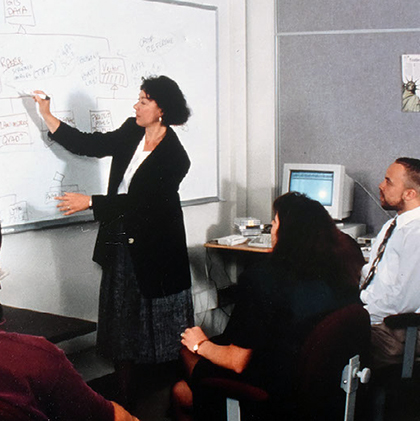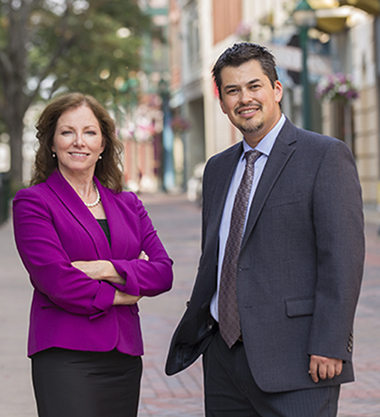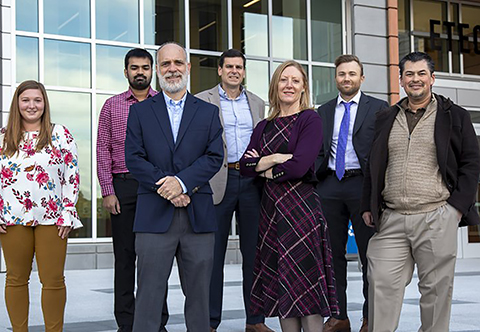30 Years of Transforming Government through Innovation

ALBANY, N.Y. (March 23, 2023) — For three decades, the Center for Technology in Government at the University at Albany (CTG UAlbany) has been working with governments worldwide to transform public services through advances in technology, policy and management.
Under the leadership of Director J. Ramon Gil-Garcia, CTG UAlbany works with government leaders at all levels on innovative ways technology and data can help solve pressing public issues of today and in the future. Among recent projects, there is a collaboration with the New York State Department of Environmental Conservation on water quality and work with the NYS Board of Elections to build a shared statewide understanding of security and resiliency practices in voter registration.
In 2023, the Center is celebrating 30 years of collaboration and innovation as a key research institute at the State University of New York (SUNY).
In 1993, then New York Gov. Mario Cuomo facilitated the creation of the Center for Technology in Government “to pursue new ways of applying technology directly to the practical problems of information management and service delivery in government.” Since then, CTG has grown into a world-class research center and has collaborated with hundreds of domestic and international researchers as well as local, state, federal and international government bodies on understanding and applying emerging technologies.

CTG UAlbany, under the leadership of Director Sharon Dawes, was a first-of-its-kind innovative model of public-private partnerships where government, academia, and the corporate community work together to solve complex problems facing society.
Among its first major projects was overhauling the title process at the New York State Department of Motor Vehicles.
“Beginning with that project, and in the dozens that followed, we used an applied research strategy to learn how technologies, policies, data and organizational factors interact to yield both problems and solutions,” said Dawes. “This broad approach made it possible to work in a wide variety of fields including human services, financial management and environmental quality.”
For their work, in 1995 CTG UAlbany was awarded the Innovations in American Government Award. The program is part of the Ford Foundation and the John F. Kennedy School of Government at Harvard University.
Nearly a decade later, the Center undertook an extensive review of the communications and technical issues confronting first responders during the terrorist attacks on the World Trade Center on Sept. 11, 2001. The project culminated in several publications, including “Information, Technology, and Coordination: Lessons from the World Trade Center Response.”
In it, the Center stressed the importance of educating policy makers about the benefits and limitations of information technology and developing a comprehensive plan for business continuity during times of crisis.
When Dawes stepped down after 16 years leading CTG UAlbany, Theresa Pardo, deputy director since 2002, was named as the new director. Pardo, an alum of the University at Albany, set the Center on a path to expand CTG’s international portfolio working with organization’s including the United Nations and the World Bank and in projects in Kenya and Nigeria, among others.
“CTG is a leader in helping governments worldwide meet their innovation goals,” said Pardo, now Associate Vice President for Research at UAlbany and Special Assistant to President Havidán Rodríguez. “Throughout our 30 years we have concentrated on creating new understanding of how the societal context and institutional character of government interacts with emerging information and communication technologies to shape the capabilities and performance of the public sector.”
A primer entitled, Digital Transformation and Public Value, produced in partnership with CTG’s Global Advisory Board, is one such resource calling attention to the critical role of context in innovation and digital transformation.
For Dawes and Pardo’s leadership in the field of technology and government innovation, both were elected fellows of the National Academy of Public Administration and both served as president of the Digital Government Society (2006 and 2014 respectively).
Over the course of 30 years, CTG UAlbany, has immersed itself in government operations in New York, nationally and in countries all over the world, working side by side with government front line professionals, managers, and executives.

“This approach resulted in a deep understanding of the conditions necessary for digital transformation at all levels of government” said Program Director Meghan Cook. “With a key focus on public value, CTG UAlbany has helped thousands of government leaders build their knowledge and capabilities so that they can continue to leverage technology and data and provide the most value to citizens.”
In 2018, the Center helped tackle one of the most pressing needs for distant communities by partnering with UAlbany’s College of Engineering and Applied Sciences to explore methods to substantially improve the effectiveness of information about emergency preparedness and response (EPR) in rural areas. The $1.5 million project, funded through the National Science Foundation (NSF) aims to deliver emergency related information through a mobile application with peer-to-peer capability and through the use TV ‘white spaces’ – the unused channels between active broadcast TV stations – which are capable of delivering WiFi over a much broader area than currently deployed technologies.
The project is just one of many that seek to leverage existing and emergent technologies to improve the lives of at-risk communities. In 2022, CTG UAlbany, now under the leadership of Gil-Garcia, embarked on another such project when it launched the Public Libraries in Smart Cities and Communities Toolbox.
“Libraries play a critical role in involving the community and addressing its needs,” said project leader Mila Gasco-Hernandez, Research Director of CTG UAlbany and associate professor of Public Administration and Policy at UAlbany's Rockefeller College of Public Affairs and Policy. “That is why we created this resource: to guide public libraries in their efforts to serve as community anchors as they develop programs and initiatives to bolster the opportunities and learning experiences of the children and adults in their communities.”
As it embarks on its next 30 years, Gil-Garcia has CTG UAlbany positioned to help the University as it launches its landmark Albany AI initiative, a $200 million public-private supercomputing endeavor that aims to harness the power of Artificial Intelligence to advance research and academic opportunities and contribute to solving pressing societal problems.
Albany AI will focus on cybersecurity, weather prediction, health data analytics, drug discovery, next-generation microchip design and other applications essential to our health, security, resiliency and economic competitiveness. It will also involve important teaching and research collaborations with faculty in the humanities, social sciences, public policy, public health and social welfare as AI increasingly touches all facets of daily life.
“Historically, CTG has been at the center of the digital transformation evolution in the public sector and always exploring the potential of new technologies for government operations and services, from the Internet and websites to social media, blockchain, Internet of Things, data analytics, and artificial intelligence,” said Gil-Garcia. “Through this work, we look forward to strongly contributing to projects such as the Albany AI Initiative and helping to guide the continuing integration of AI in the public sector.”
Among its current projects, CTG UAlbany is collaborating with the College of Emergency Preparedness, Homeland Security and Cybersecurity to help build a message design dashboard for FEMA. The $2.8 million contract will help emergency managers write effective messages for public alert and warning.

CTG UAlbany has also worked with numerous graduate and undergraduate students at the University at Albany during the past 30 years. In partnership with UAlbany colleges and departments, the Center serves as a site for academic internships, independent studies and applied learning.
The future mission for CTG UAlbany is certainly clear as it continues to bridge the gap between governments and the technology available to help them succeed.
Most importantly, CTG UAlbany is focused on building relationships, trust, and the shared vision needed for diverse and disparate organizations to collaborate and cooperate on building opportunities for citizens and communities.
“I am honored and excited to lead CTG into the third decade of its existence and reaffirm our dedication and commitment to generate knowledge and improve government and public service through innovations in technology, policy, and management for many years to come,” said Gil-Garcia, who is also professor of Public Administration and Policy and International Affairs at Rockefeller College.




